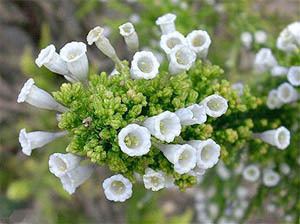Rank Species | Genus Fabiana Higher classification Fabiana | |
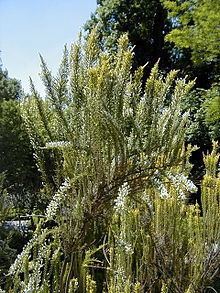 | ||
Similar Fabiana, Nightshade, Schizanthus parvulus, Nicotiana acuminata, Solanum maglia | ||
Octonary ingredients of fabiana imbricata formulations pankaj oudhia s medicinal plant database
Fabiana imbricata (pichi) is a species of flowering plant in the family Solanaceae, native to dry upland slopes in Chile and Argentina. Growing to 2.5 m (8 ft 2 in) tall and wide, it is a frost-hardy, heath-like evergreen mound-forming shrub. It has needle-like leaves and small white, tubular flowers in early summer.
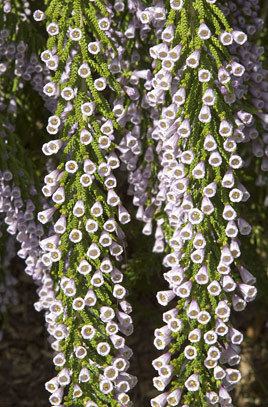
The upright form F. imbricata f. violacea, bearing masses of pale violet flowers, has gained the Royal Horticultural Society's Award of Garden Merit.
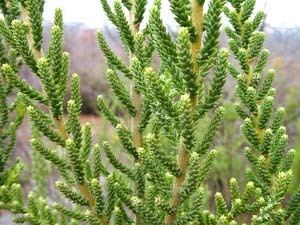
Fabiana imbricata is the type species for the genus Fabiana. F. imbricata foliage, specifically has been traditionally employed as a diueretic and digestive and has been proven to have a dose-dependent gastroprotective effect, in studies evaluating the main sesquiterpene of the foliage. Interest in F. imbricate has extended into the development of invitro culturing of the plant’s tissue for the harvesting of secondary metabolites for further research.
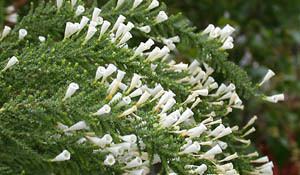
F. imbricate a long lived shrub distributed via seeds, and broadly distributed within South America. Fire and wind, followed by post-fire high precipitation in the early spring are requirements for successful F. imbricate shrub requirement. Furthermore, F. imbricate is a keystone species within these ecosystems, reducing species richness while simultaneously increasing fuel load during grassland colonization events, altering the structure of the surrounding ecosystem. A recent analysis of the Solanaceae family by Olmstead and Migid, which included 89 genera and 190 species, including F. imbricate as a representative of the Fabiana genus. This study employed two chloroplast DNA regions (ndhF and trnLF) to provide higher resolution than previous analyses through the development of both a strict consensus based tree, and a most parsominonious tree, illustrating inferred branch lengths. Their analysis placed F. imbricate in the same position in both trees. In both, F. imbricate is a sister clade with Calibrachachoa parviflora (68% BS in the strict consensus based tree). These genera together are sisters to Pentunia axillaris (100% BS in the strict consensus based tree). This group together is within the supergeneric group Petunieae, within the family Solanaceae. Unfortunately, this analysis was limited to examining one species per each of these three genera, due to its breadth. These data are in agreement with the karyotypic analysis of Acosta, et al., which examined 41 populations of 5 genera (21 species) within the Nicotianeae tribe of Solanaceae (later reorganized by into several new groups, including the supergeneric group Petunieae by Olmstead and Migid, el at 2008). This study found 2n=2x=18 (x=9) for F. imbricate, F. densa, and F. denudate, Calibrachachoa sp.as well as Petunia species examine. They hypothesize x=7 to have been the basal number for solanales, and the x=12 to have dervived from the tetraploid level, followed by tetraploid reduction. Within the groups surveyed, this methodology does not give rise to the same phylogenetic tree overall as that of Olmstead and Migid, but for Fabiana and sister genera, it is in agreement. While the agreement of the two choloroplast analyses with the karyotyic analysis is valuable, current data does not permit the detailed phylogenetic analysis of Fabiana below the genus level.
